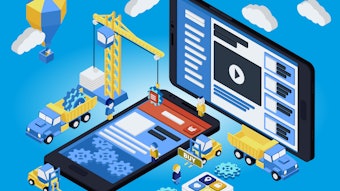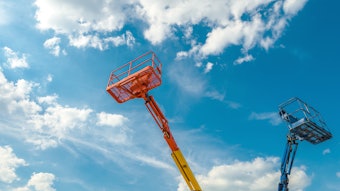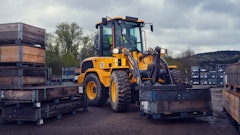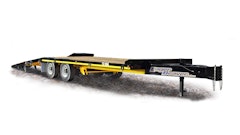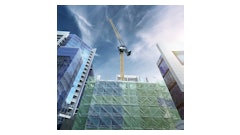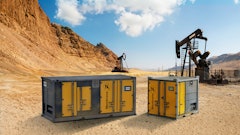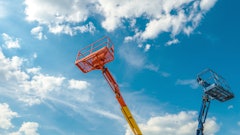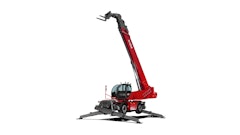
As a rental business owner or manager, the safety of your customers is always at the top of your mind. One of the worst case scenarios you could imagine is one of your customers getting hurt while using a piece of lawn & grounds equipment they just rented from you.
So, if safety is at the top of your mind, it must be at the top of their minds as well, right? Probably not.
Research by MSA Safety Works shows that 92 percent of consumers are not even considering safety when they enter a store for product purchases, and the same can be assumed when it comes to product rentals, says John Quinn with MSA Safety Works.
Ryan Malone with Youngstown Equipment Co. adds that customers are often most concerned with the equipment, not safety.
“PPE (personal protective equipment) is often overlooked,” he says. “When PPE is available and the rental employee is well versed in the equipment and the PPE associated with the job at hand, the benefits are tremendous. The customer is protected against potential injuries, the employee is educating the customer and creating a stronger relationship, and the rental business is seeing an add-on sale that would never have been made if not offering any PPE.”
Necessary protection
Each type of lawn & grounds application is unique, therefore requiring different types of PPE. Suppliers sourced for this article offer these PPE suggestions for various applications.
Leaf Blowing. Depending on the type of blower, hearing protection and gloves are typically recommended. But, says Quinn with MSA Safety Works, the most important piece of PPE operators should wear is safety glasses or goggles.
- Eye protection. Because leaf blowers can move leaves, twigs and other debris, eye protection is recommended to ensure nothing comes into contact with your eyes.
- Hearing protection is designed to reduce the noise to a level that is acceptable and still allows you to hear what you need to hear, says Britton Harold, product marketing manager for parts and accessories with Husqvarna Forest & Garden. “Hearing loss is gradual and sometimes a slow and undetected process, so ensure that you’re always protecting yourself from noise
damage,” he says. - Gloves. “Anytime a hand-held piece of equipment is used, it’s recommended you use gloves in case of contact with oil, gas or parts of the engine that may be hot,” says Harold.
Weed/Hedge Trimming
- Hearing protection
- Eye protection to protect against shooting debris, grass, twigs and rocks. Quinn with MSA Safety Works notes that multiple protection can be made simple with a product such as MSA Safety Works’ Weed Trimmer Faceshield, which features a wire-mesh-screen visor to help block debris, integrated ear muffs to help block harmful noise, an adjustable-ratchet nape strap for stability and comfort, and safety glasses that meet high-impact eye protection requirements.
- Gloves
Tree Trimming/Chainsawing
- Protective Chaps/Pants. “Wearing chaps or pants will help protect you in the event the chainsaw makes contact with a part of your body,” says Harold. “It may not completely alleviate the injury, but will help reduce the severity of it dramatically. The majority of chainsaw injuries are on the legs, so chaps or pants with protective chainsaw material are very important.”
- Hearing protection.
- Eye Protection. “With the various wood, chips and dust that flies during chainsaw use, glasses that fit close and snug to your face are recommended,” says Harold. “This will help to keep debris from interfering with your vision or potentially causing damage to your eyes.”
Quinn notes that operators could take this one step further and use full face protection. “Hard hats with attached face shields or stand-alone face shields protect the entire face,” says Quinn. “Of course, for optimum eye protection, tight-fitting spectacles or goggles should be worn under a face shield assembly.”
- Helmets. “If the tree you’re working on is not on the ground already, an approved helmet is recommended,” says Harold. “Many injuries are caused by falling branches, particularly in the head area. Many helmets come with hearing and eye protection built in.”
- Gloves with built-in cut resistance are recommended.
Chipping/Shredding
- Dust mask
- Eye protection, such as safety glasses and faceshield
- Hearing protection, such as ear plugs or muffs
Selection factors
Rental businesses need to ensure that the PPE they provide meets all the appropriate standards and properly fits the customer.
“The degree of safety depends, in part, on the degree of coverage,” says Quinn. “Hard hats, face shields, safety glasses and goggles should be fitted to provide sufficient coverage.”
PPE sizes can vary according to the manufacturer, model and even price range. Also, the assemblies should be checked on all equipment so that they are in working order before the customer leaves the store with them.
Harold with Husqvarna notes several questions rental businesses can ask regarding their PPE supplier.
- Are there standards for the type of PPE we’re buying? If so, only those certified items should be purchased. UL is a regulatory agency that certifies apparel/equipment for safety usage, while ANSI is an industry group that sets standards but does not certify products. “Many times these ratings become the standard to ensure you’re buying the right type of PPE,” says Harold.
- Are the materials constructed for durable, comfortable usage — whether it’s going to be used one hour or 100 hours?
For example, Malone with Youngstown says that when selecting gloves, one should look for the amount of PVC reinforcement on the palm, as well as the material used in between the fingers. “If it looks and feels tough, it will last longer,” he says.
Click here to view the PDF version of the PPE Recommendations by Application table.
Display matters
The best — and most logical — way to promote your lawn & grounds PPE is to display it near the products it can be used with. There are many ways to display these products, and most suppliers of PPE have various displays to choose from.
Merchandising displays come in the form of countertop or floor models, and the type you choose will most likely depend on the space you can devote to it. Another idea is to display your PPE on a safety mannequin to show customers how it should look and to emphasize the importance of safe practices.
In addition to displays located near the trimmers, chainsaws, mowers and chippers, you could have a display on or near the counter where customers could grab safety glasses or gloves on impulse.
“Having [items] merchandised on the counter will help sell a lot more,” says Malone. “We often hear that when someone is renting equipment, they’ll include gloves as a last minute add-on when the gloves are right there on the counter.”
Along with PPE, your displays could include statistics of injuries or regulations for PPE to emphasize the importance of suiting up for safety.
Jay Larsen, North American marketing manager with Shindaiwa, suggests integrating quality safety training videos and safety manuals into your displays as well. He also recommends organizing one- or two-hour training classes as a way to get the safety message to end-users.
“It’s important for any retail business offering outdoor power equipment tools to promote safety and offer PPE,” he says.
“Lawn and grounds equipment these days typically come in small packages but tend to pack a lot of power. It’s important for customers not to take chances and skip wearing PPE. This is power equipment. It has no memory and no conscience. It doesn’t care who you are or what it cuts.”
One way to increase the likelihood of customers taking PPE out of the door with them when renting lawn & grounds equipment is to have knowledgeable employees. “Make sure employees are aware of potentially harmful situations pertaining to specific equipment and communicate those situations with the customer,” says Malone. “Have your employees ask the customer questions about the job at-hand. Communication is important.”
You could also package safety items with the lawn & grounds equipment rental. “If the item is used during the rental, the customer pays for the product. If it’s not used — hopefully because the customer already is using their own safety products — then the safety product sale will be credited when the rental is returned,” says Quinn with MSA Safety Works. With this method, you have at least covered yourself by making sure the customer had safety PPE when he left the store.
It’s not enough to just offer lawn & grounds equipment for rent. When your customers leave your store, you want them to have a safe, productive rental. Offering quality PPE can be a profitable add-on to your business, but it goes beyond that. It’s about being responsible to your customers.
“Safe usage of lawn & grounds equipment doesn’t stop at proper maintenance and usage,” says Harold with Husqvarna.
“It’s also ensuring equipment operators are properly dressed in case there is a mistake made.”



